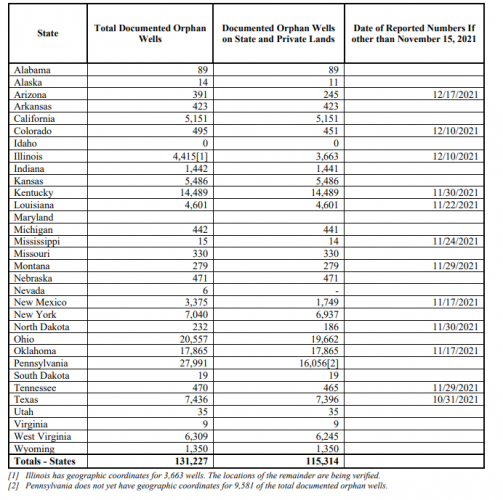D
Deleted member 28227
Guest
I think 2050 will be quite different than 2022.In 30 years are they actually gonna plug all the wells and reclaim the area?
1. Nature of the wells, a lot of the orphaned wells were shallow marginal wells to begin with and drilled 40+ years ago. Peaked with a few barrels a day, they have a tank on site, and probably for the last 10 years of their life they had a pumper visiting them maybe every 3 or 4 months. When prices drop that pumper gets laid off, the amount of oil that well produces isn't worth driving out to collect so they get shut-in. Then the company goes bankrupt and those shut in wells are orphaned. These wells are all over the place, in 40 years things grow back and in some locations (not desert) it can actually be a chore to find the well.
Also sometimes operators do plug them, but the state agency doesn't have great record keeping for plugging, so everything was done correctly, the BLM or the state just doesn't have a record.
2. That's different than say a big HZ well that peaks at 2000 barrels a day and has pipe to the site, and where their 8+ wells on the same site.
I think the modern HZ wells won't have a reclamation issues, it's definitely the thousands of 1880-1970 vertical wells that are the biggest issue (there are definitely still lots of conventional vertical wells being drilled)
So in my mind from a reclamation stand point I'm not worried about EOG drilling 100MM pads, I'm worried about Johnson Brother's drilling 100k wells.
The other component is ESG, because folks have realized it's an issue and made it an issue big public companies (and some smaller privates) have made it a point to conduct big plugging campaigns.
... also if a vertical well is in the same common source of supply as a HZ well, when you frack the HZ well you will collapse the vertical well, so typically you plug the vertical wells you own when you go to frack.
I guess last, though I touched on it above record keeping, websites, etc for state agencies ie WOGCC are exceptionally janky.. in 2022...their was basically nothing in say 1990.
The BLM doesn't actually have a website or do record keeping.
The industry uses companies like IHS, Enverus, and Oseberg to get their well data.
I have zero faith that the BLM has any handle on orphan wells, I would take anything they say with a grain of salt.









